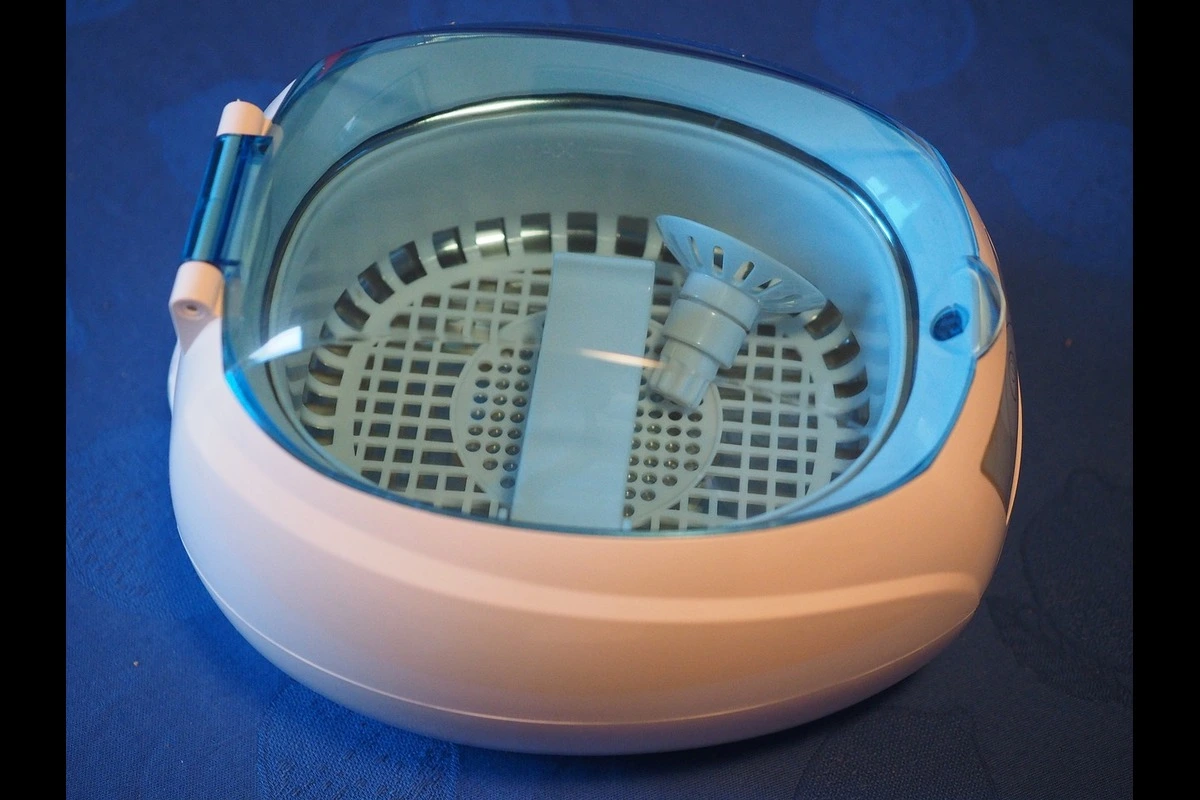Blog
What is an Ultrasonic Cleaner and Do You Need One?

Every seasoned woodworker knows the thrill of a seamless joint and the satisfaction of tools performing exactly as they should. But behind every beautiful finished piece lies an often overlooked factor: tool maintenance. Over time, sawdust, glue, resin, and even rust can accumulate on your tools, compromising both efficiency and accuracy.
That is where ultrasonic cleaner can help - a tool commonly associated with jewelry stores and dental clinics, now is entering woodworking shops. But what exactly is it, and could it be the key to taking your craftsmanship to the next level?
What Is an Ultrasonic Cleaner?
An ultrasonic cleaner is a high-tech cleaning device that uses ultrasonic sound waves to remove dirt, debris, and contaminants from items submerged in a liquid cleaning solution. Instead of relying on physical scrubbing, it harnesses the power of cavitation (the formation and implosion of microscopic bubbles) to dislodge even the most stubborn grime.
Here’s how it works:
- Ultrasonic Waves Generated: A transducer in the machine emits high-frequency sound waves, typically between 20 to 40 kHz, into a bath of water or cleaning solution.
- Bubble Formation (Cavitation): These waves create millions of microscopic vacuum bubbles in the liquid. This process is called cavitation.
- Powerful Implosions: When these bubbles collapse close to the surface of a submerged object, they generate concentrated jets of pressure and heat that dislodge contaminants from even the smallest crevices.
- Gentle but Thorough Cleaning: The result is a deep, uniform clean that reaches into nooks and crannies that brushes, rags, or even dental picks can’t access.
Why Should Woodworkers Care?
You might be thinking, “I already use mineral spirits and a wire brush—why switch?” The answer lies in efficiency, effectiveness, and tool preservation.
1. Restore Blades to Like-New Condition
Pitch, resin, and sap buildup on saw blades, router bits, and planer knives can dull edges and lead to overheating. Ultrasonic cleaners effortlessly eliminate these residues, restoring sharpness and helping your tools cut more cleanly and last longer.
2. Clean Precision Parts Thoroughly
Fine-tooth saws, hand plane components, threaded knobs, drill chucks, and intricate jigs are difficult to clean completely by hand. Ultrasonic cleaners reach into every crevice, ensuring full removal of dust, rust, and gunk without dismantling your tools.
3. Effective Rust Removal
If you're a fan of vintage tool restoration, ultrasonic cleaning is a game-changer. Combined with rust-removing solutions like citric acid or Evapo-Rust, the ultrasonic process loosens corrosion quickly and safely. It’s a fantastic pre-treatment before honing or lubricating vintage finds.
4. Non-Abrasive Cleaning
Unlike scrubbing with steel wool or wire brushes, ultrasonic cleaning won’t scratch or damage finely ground surfaces, delicate calibration marks, or tight tolerances. This makes it ideal for maintaining the integrity of precision tools.
5. Time-Saving & Hands-Free
Simply place your items in the basket, turn on the cleaner, and let the machine do the work while you focus on your projects. Most cycles take 5 to 20 minutes depending on the grime level, and you can clean multiple items simultaneously.
6. Eco-Friendly and Safer
In many cases, a mild detergent mixed with water is all you need—reducing your dependence on harsh solvents and minimizing harmful fumes in your shop. Cleanup is easier, and you're less exposed to potentially hazardous chemicals.

Do You Actually Need One?
An ultrasonic cleaner is not essential for every woodworker, but it’s certainly a valuable investment for those who:
- Regularly maintain or sharpen saw blades, router bits, or other cutting tools.
- Restore old hand tools or machinery components.
- Rely on precision instruments that need to stay perfectly clean and rust-free.
- Want to save time and reduce effort in tool maintenance.
- Are serious about extending the lifespan and performance of their tools.
For hobbyists or beginners, a small bench-top model may be sufficient. Professional woodworkers or restorers might opt for a larger industrial-grade unit with a heated tank for better results.
Choosing the Right Ultrasonic Cleaner
When shopping for an ultrasonic cleaner for your workshop, consider:
- Tank Size: Match the tank capacity to your most commonly cleaned tools. A 2-6 liter model works for most handheld tools.
- Power & Frequency: Look for units with at least 35-40 kHz frequency for woodworking tools—higher frequencies are more gentle and ideal for detailed cleaning.
- Heating Feature: Warm solutions clean more effectively—especially for removing hardened resins and oils.
- Timer Functionality: Automatic timers allow you to set a cleaning cycle and walk away.
Final Thoughts
Tool maintenance isn’t just about cleanliness—it’s about performance, precision, and pride in your craft. While traditional cleaning methods still have their place, an ultrasonic cleaner offers unmatched cleaning power that’s gentle, thorough, and efficient.
If you value your tools and the work they produce, investing in an ultrasonic cleaner might be one of the smartest upgrades you make to your workshop this year.
